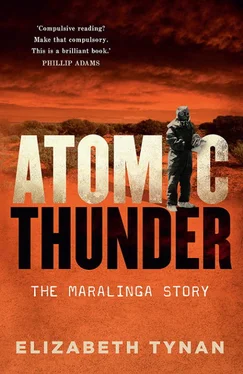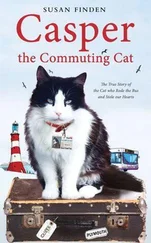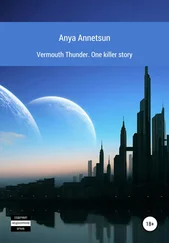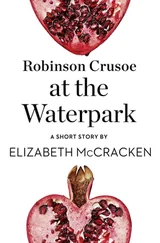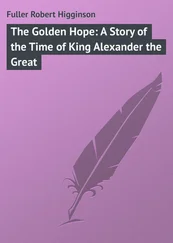(Clause 11 specifically guaranteed to provide compensation for claims of death, injury or property damage sought by British government employees only, something that the Australian Government had agreed to despite an initial weak protest.) Hamilton had also mentioned how Britain had already repatriated half a kilogram of plutonium from the site in 1979, and how this was followed by an ‘exchange of notes’ that stated there was ‘no question of the United Kingdom having any further responsibility to repatriate waste’.
In the New Scientist story, Anderson had paraphrased Hamilton, who had equated dose levels at Maralinga ‘to those in Cornwall from naturally occurring radon gas’. He had also given Geoff Williams’ rebuttal, which had described Hamilton as mischievous: ‘It is not acceptable internationally to compare levels of man-made radioactivity with those of a naturally occurring radionuclide… Doses in Cornwall could reach 8 millisieverts a year. But, according to the TAG, because of the Aboriginal lifestyle, a child living near Taranaki could inhale more than 460 millisieverts a year’. Young children were at the greatest risk, because they were closer to the dusty ground and had smaller body mass.
Anderson was asked several times in different interviews to speculate on what the British knew and when they knew it. He tried to be balanced and fair. When asked by one host if it was proved that the British had knowingly lied, Anderson replied:
Well that’s a very, very good question. Was it deceit or not? You have to go back to the time… the world was different 30 or 40 years ago. These were cloak and dagger days and it has been suggested to me particularly by a person who was involved a lot on the Australian side at the time that the British Atomic Weapons Research Establishment, or parts of the Establishment, may not have been talking to each other. So whether it was deceit and deliberate is another matter – I think the crucial thing from Australia’s point of view is that it happened, and therefore 40 years on Australia believes it has a moral right for the British to participate again in a cleanup.
Almost certainly Anderson was referring here to Moroney, who had guided much of his understanding of the issue. The host continued with the theme of deceit, commenting that the key question was British culpability ‘and the extent to which Australian officials may have been part of that conspiracy of silence’. Anderson said:
Whether there was any Australian duplicity in it is another interesting point… I guess one of the questions that comes up is: why didn’t Australia do a more thorough job itself at the time and find out what was going on back then? Of course I get back to the point that this was a long time ago. I think that the British position was probably to a large extent taken and not questioned. We were much, much closer to the British in those days – in fact it was suggested in the parliament in London the other day that a lot of this, as far as the arrangement to do the testing, was stitched up in a telephone call between Robert Menzies and Clement Attlee, who was the British PM at the time. I doubt very much whether telephone calls these days would come to such deals.
In an interview on South Australian radio station 5CK, Simon Royal raised the slightly qualified New Scientist editorial support. The magazine’s editorial had suggested that ‘even if Australia has right on its side, it is too much to expect that Britain should immediately offer to pay for part of the clean-up. The sums of money are not massive by government standards but they are far too big for the Treasury to part with lightly’. The rest of the piece had supported the story. Royal asked Anderson how he felt about the suggestion that Britain shouldn’t immediately offer to pay up. Anderson replied that the editorial had been suggesting Britain come clean first and ‘then, probably, pay up’. Royal asked the question again and Anderson gave his own view:
I think that, in my own personal opinion, the British should pay up, that it is quite clear that the cleanup that was done, Operation Brumby in 1967 and the report that was done into it by Pearce in 1968, it wasn’t correct. For various reasons the cleanup was not done properly. Now we have the technology to do it properly, and Australia I don’t think has been unreasonable – it was presented with a range of options from about $13 million to about $600 million to clean the place up and it has chosen, if you look at the document, bits and pieces of this and that and come up with $101 million. And that to me seems a reasonable amount and really by today’s international standards it is not a huge amount.
Royal was also interested in the role the article might play in the ministerial discussions about to get underway in London, asking if the article added more fuel to the fire. Anderson replied:
I should think so, yes. New Scientist is quite widely read in the UK – it goes to Whitehall in other words. The point is, why we concluded that it was going to be a heated meeting is that in all the public statements that have come out recently, especially in the parliament over there, it’s quite clear that unless there’s something going on behind the scenes, but at least publicly they do not intend to pay up.
The British Government faced other forms of pressure too. A documentary prepared by the BBC, with Australian Government assistance, entitled Secrets in the Sands , was broadcast in Britain on 28 October 1991. It revealed the human and environmental toll of the British tests and was screened just before Crean met Lord Arran, then undersecretary of state for Defence and the Armed Forces, to present a case based on the TAG report and early interpretations of the Roller Coaster data. The material in the New Scientist story had been in official British hands since 1991, having been presented by a senior Australian Nuclear Science and Technology Organisation scientist, Des Davy (then general manager scientific for the organisation, and also convenor of TAG), during an official meeting in December 1991. But the information was not made public. The public and private pressure on the British Government was mounting at this time, far more than it had done during the Royal Commission some years earlier. Anderson’s story seemed to cap off the moral case that Australia had been making for compensation. Less than a week after the New Scientist story appeared, compensation was finally promised.
‘Britain’s dirty deeds at Maralinga’ was an important piece of scientific investigative journalism. It contributed (either directly or indirectly) to a political solution to a longstanding national problem. The story resonated beyond the New Scientist readership, becoming a high-profile mainstream media story in Australia and adding to the body of investigative journalism that finally illuminated Maralinga. The story also provided conclusive proof that the old way of reporting on the British nuclear tests in Australia was gone. Accepting official information, explanations and undertakings was no longer sufficient. The journalists covering the tests and their aftermath now were watchdogs and, true to the metaphor, were dogged in seeking the truth. Anderson’s story was a pivotal moment in the uncovering of Maralinga, marking at last the full transition from opacity to transparency. In this sense it was the culmination of a process that had begun 15 years earlier. Although the Maralinga lands may not have been completely remediated by the compensation deal that was finally struck a few days after the story was published, more was done than if the issue had languished without such intense public scrutiny. The outrage of a wronged servant of the British nuclear tests, John Moroney, found the right outlet. Much to his frustration, terminal illness prevented Moroney from playing the central role he believed his involvement warranted. He did not live to see the outcome of his painstaking Roller Coaster analysis, either, but one must imagine he would have been well pleased.
Читать дальше
